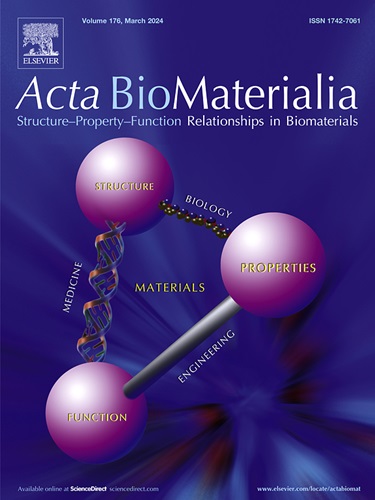Effect of electrical stimulation generated by self-powered systems for tissue repair
IF 9.6
1区 医学
Q1 ENGINEERING, BIOMEDICAL
引用次数: 0
Abstract
Bioelectricity plays an important role in tissue repair. Nanogenerators can harvest biomechanical energy and convert it into electrical signals, producing electrical stimulation (ES) for diverse biomedical applications including sensing, tissue repair, cardiac pacing, etc. This review focuses on the overview of the single or multifunctional role of ES generated by self-powered nanogenerators in bone and tendon, nerve, skin, and myocardial tissue repair. Particularly, to elucidate the differential cellular responses and effects on endogenous electric fields between conventional repair and ES-enhanced tissue regeneration, the possible mechanisms by which ES promotes repair in different tissues are summarized. Eventually, the ES parameters and the matching between the type of ES produced by the nanogenerator and the practical application scenario of biological tissue are discussed. The main challenges and future perspectives of nanogenerators in tissue therapy are also proposed, expecting to promote the development of this emerging restoration method.
Statement of significance
As miniature devices for tissue repair, self-powered nanogenerators can achieve the ambitious goal of self-supplying energy and efficient tissue repair. This review article details the electrical stimulation generated by self-powered nanogenerators in different tissue repair by simulating and augmenting endogenous bioelectrical signals. Introducing the classification and mechanisms of nanogenerators and reviewing the influence of the electrical stimulation and electric field in bone and tendon, nerve, skin, and myocardial tissue repair. Notably, the possible mechanisms by which electrical stimulation acts on different tissues are concluded. Lastly, the match between types of nanogenerators and different tissues is proposed, and the main challenges and perspectives of nanogenerators in tissue therapy are also discussed.

自供电系统产生的电刺激对组织修复的影响。
生物电在组织修复中起着重要的作用。纳米发电机可以收集生物机械能并将其转化为电信号,产生电刺激(ES),用于各种生物医学应用,包括传感、组织修复、心脏起搏等。本文综述了由自供电纳米发电机产生的ES在骨和肌腱、神经、皮肤和心肌组织修复中的单一或多功能作用。特别地,为了阐明常规修复和ES增强组织再生在内源电场作用下的细胞差异反应和影响,总结了ES促进不同组织修复的可能机制。最后,讨论了纳米发电机产生的ES参数以及ES类型与生物组织实际应用场景的匹配问题。最后提出了纳米发电机在组织治疗中的主要挑战和未来展望,以期促进这一新兴修复方法的发展。意义声明:作为组织修复的微型装置,自供电纳米发电机可以实现自我供电和高效组织修复的宏伟目标。本文综述了自供电纳米发电机通过模拟和增强内源性生物电信号产生的电刺激在不同组织修复中的应用。介绍了纳米发电机的分类和机理,综述了电刺激和电场对骨肌腱、神经、皮肤和心肌组织修复的影响。值得注意的是,总结了电刺激作用于不同组织的可能机制。最后,提出了纳米发电机类型与不同组织之间的匹配,并讨论了纳米发电机在组织治疗中的主要挑战和前景。
本文章由计算机程序翻译,如有差异,请以英文原文为准。
求助全文
约1分钟内获得全文
求助全文
来源期刊

Acta Biomaterialia
工程技术-材料科学:生物材料
CiteScore
16.80
自引率
3.10%
发文量
776
审稿时长
30 days
期刊介绍:
Acta Biomaterialia is a monthly peer-reviewed scientific journal published by Elsevier. The journal was established in January 2005. The editor-in-chief is W.R. Wagner (University of Pittsburgh). The journal covers research in biomaterials science, including the interrelationship of biomaterial structure and function from macroscale to nanoscale. Topical coverage includes biomedical and biocompatible materials.
 求助内容:
求助内容: 应助结果提醒方式:
应助结果提醒方式:


